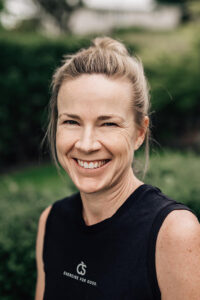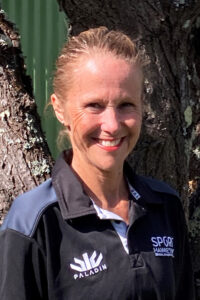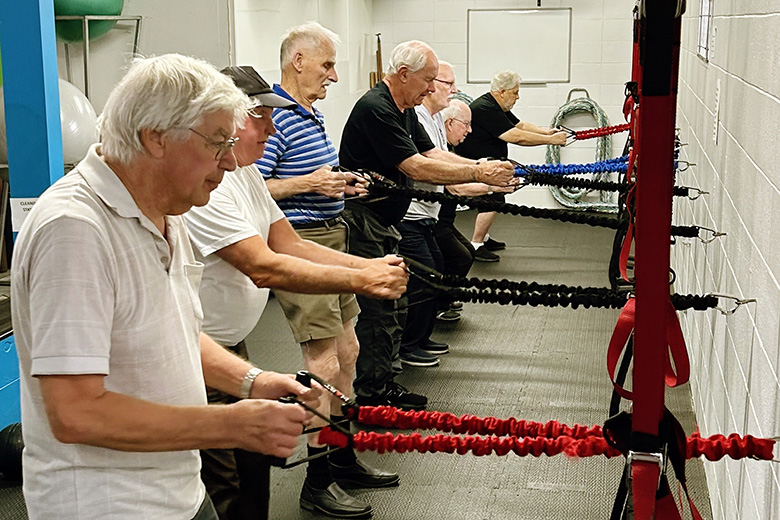[As published in May/June BayBuzz magazine.]
Just a decade ago being active in your golden years was more likely to be a round of golf, bowls or a morning walk.
Fast forward to today and more retirees can be seen hurtling down mountain bike trails (some on e-bikes), getting physical at the gym, playing pickleball or completing marathons or adventure races.
As we live longer – the average life expectancy has risen from 71.1 years for a male and 77.2 for a female in the late 1980s to 80 years for men and 83 years for women – we are also more conscious of keeping active and well.
Physical activity – particularly when it is moderate-intensity and raises your heart rate – is known to reduce the risk of a number of diseases, including heart disease, stroke, diabetes and cancer.
Personally as I move through my 50s I’m determined to keep fit and active. I go the gym about 4-5 times a week, regularly explore the mtb trails of Te Mata Park and Esk forest (albeit on an e-bike) and surf whenever a swell hits the Bay.
I have a gym buddy that hit superannuation age last year who is much more flexible than me and has put me to shame swimming laps at the Hawke’s Bay Regional Aquatic Centre.
The Global Burden of Diseases, Injuries and Risk Factors Study 2019 found Kiwis were now living longer but spending more years in poor health.
Stats NZ reports the number of people aged 65 years or older (65+) living in New Zealand is likely to hit 1 million by 2028 and 1.3 million by 2040.
The proportion meeting the physical activity guidelines increased between ages 50 and 64 (from 60 percent to 64 percent) and between ages 65 and 74 (from 57 percent to 62 percent).
Popular activities are predominantly non-competitive activities such as walking, individual workouts, Pilates, and yoga.
As I leave Peak Fitness in Havelock North after my daily Hiit (high intensity) class, I’m greeted by the plus 70s that attend workout classes tailored for older adults by Cath Steiner.

Cath previously worked at Sport Hawke’s Bay delivering senior exercise classes before seeing a gap in the wellness market for personal training, group exercise and programmes designed for those diagnosed with Parkinson’s and prostate cancer and established her business Exercise is Good.
She runs classes at Peak Fitness in Havelock North as well as delivering strength and balance and Tai Chi classes in retirement villages, and is soon to launch a stroke and dementia group training programme.
“When I worked for Sport Hawke’s Bay delivering seniors’ exercise, I was blown away with how important it was to them – both the social side and how exercise helped them be fitter and stronger for their daily life activities.
“Until then I’d viewed exercise training as a means to get better at sport or manage a healthy weight rather than a way to help reduce pain and improve or resolve symptoms of so many health conditions.
“I was hooked on how meaningful the outcomes were for this population and so added to my Bachelor of Physical Education degree with a Certificate in Exercise and became registered for both personal training and group exercise delivery.”
Cath has captured a growing market and says older adults are becoming more knowledgeable about the benefits of exercise as research and awareness develops.
“Exercise does us good, but I believe exercise can be done ‘for good’ or forever. We should never stop exercising, but simply adapt it to our changing health, lifestyle and goals.”
She says many of her clients take up organised physical wellbeing programmes after younger family members recommend to them the benefits of personal or group training.
The benefits, are broad from social connection and a sense of community to improved mental wellbeing and physical wellbeing using a wide range of equipment such as kettlebells, dumbbells, sports balls, boxing gear, hula hoops, resistance bands, blaze pods, agility ladders and more.
“Whilst this all sounds physical, my clients know I love to incorporate cognitive challenges into their training as well, it’s essential for neural pathway building and often generates laughter and connection with me or other group members, which you just can’t beat. It contributes to them feeling good about coming back and keeping with the programme.”
The workouts keep or build aerobic fitness, muscle tissue, bone density, grip strength, range of movement and the ‘big one’ balance.
She says as a result, there is growing demand in the falls prevention space and condition-specific group training, which gives individuals both targeted exercise and a mini community.
Cath trains two 92-year-old women who she says are as eager to see progress as any younger gym goer. She says it’s important that training is still challenging and that they can see noticeable improvements in their everyday life.
“The days of thinking a gentle walk is enough are over, walking is great but there is much more we should and could be doing like incorporating resistance, agility and dual task training.
“For these ladies every session has different exercises to keep it interesting and I progress their training just like I would for a younger participant.
“What was light resistance band, seated shoulder presses has progressed to standing shoulder presses with dumbbells, sit to stands have progressed to not using chair arms and holding a medicine ball, the resistance level on the stationary bike has increased, adding more ‘cognitive load’ to their dual tasking drills.”
Cath says it’s hugely important to recognise that training for older people still needs to be safely challenging in intensity and teaching them about their bodies.
“My coaching cues teach them about how their body is moving and how they can improve and functionally apply this to their activities of daily life.
“Most are fascinated and empowered with this approach.”
Cath has also introduced specific programmes for people living with Parkinson’s and dementia called Counterpunch Parkinson’s as well as Prost-FIT a programme for those with prostate cancer.
The number of people with Parkinson’s in New Zealand has been steadily increasing, from an estimated 7,000 in 2006 to 11,000 in 2020 and is expected to reach 22,000 by 2040.
She also has plans to introduce the Ronnie Gardiner Method (RGM) to Havelock North later this year. RGM is an innovative, multi-sensory exercise method for the brain and body, in which rhythm, music, verbalisation and movement are used to stimulate both cognitive and motor skills.
Active 4 Life gets people exercising
Sport Hawke’s Bay launched its Kiwi Seniors programme in 1991 which is now branded Active 4 Life.

Active recreation team leader Eana Young says 30 years on some that were then aged in their early 60s are still participants in what is now called Active 4 Life.
“We have had some seniors who have to contend with some major health issues over the years and they still maintain that our Sport Hawke’s Bay programmes are what has kept them going,” Eana says.
Active 4 Life programmes are held in local churches, halls and community centres and Eana says there’s a broad range of benefits that get participants out of their home.
Programmes are suitable for people of all abilities and are led by a team of qualified exercise professionals that have worked in this specialised area for a number of years.
“The key thing is about finding a programme that you enjoy and working within your limitations. There is always an open path for people to make contact with our friendly team at Sport Hawke’s Bay if they have any queries about which is the right programme for them.
“Many a time, we are told that getting up in the morning to come to one of our programmes gives people ‘a purpose’ and something to look forward to each week.
“Active 4 Life is attended by a passionate and dedicated group who not only participate but volunteer to ensure the smooth running of programmes throughout the region.”
She says for those that are considering getting more active there’s a few things to consider such as seeking advice from your GP.
“If you have any medical concerns before starting on an exercise regime, be guided by your doctor.
“It is just about being able to adjust your health and fitness goals and being realistic about what you can do while being in a friendly supportive environment with likeminded people or if exercising independently keeping yourself safe and enjoying what you do.”
To find out more about active programmes visit www.sporthb.net.nz or go to Cath’s facebook page – Exercise for Good.



most probably more concerned with their massive rates & insurance increases ! Than going to the gym